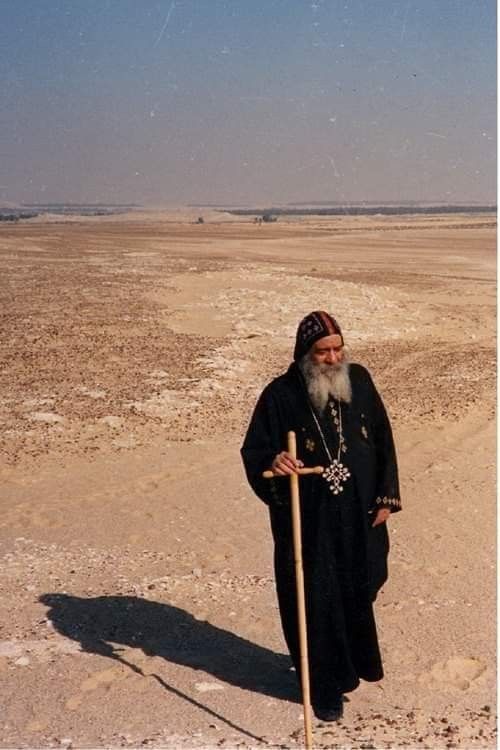Coptic Orthodox Christianity, with its roots tracing back to the early days of the Christian faith, is one of the oldest religious denominations in existence today. Originating in Egypt, the Coptic Orthodox Church represents the largest Christian community in the Middle East and North Africa. The term “Copt” derives from “Aigyptos,” the Greek word for Egypt, and it is used to describe the descendants of the ancient Egyptians who have embraced Christianity following its arrival in the region.
The Coptic Orthodox Church was officially established by Saint Mark around the year 42 AD, making it a direct inheritor of the teachings of Christ through the apostolic lineage. Today, the Coptic Orthodox Church stands as a formidable bastion of faith, tradition, and communal identity, retaining its unique theological perspectives and liturgical practices. This article aims to explore the essence of being a Coptic Orthodox Christian, how these believers practice their faith, and their global presence within the broader Christian perspective.
Foundational Beliefs and Theology
The theological framework of Coptic Orthodoxy is characterized by a distinct Christology that emphasizes the dual nature of Christ as both fully divine and fully human. The Coptic Church adheres to the Nicene Creed, which articulates core Christian beliefs regarding the nature of the Holy Trinity—Father, Son, and Holy Spirit. However, a significant theological differentiation arose during the Council of Chalcedon in 451 AD, leading to the Coptic Orthodox Church rejecting the council’s definitions concerning the nature of Christ, which they regarded as a misinterpretation of Orthodox faith.
The Copts maintain a profound veneration for the Virgin Mary, recognizing her as the Theotokos, meaning “God-bearer.” This doctrine reinforces their belief in the Incarnation, where Jesus Christ is seen as both divine and human, coherently merged in one person. Moreover, the veneration of saints plays an integral role in Coptic spirituality, with many laid out in a calendar filled with feast days that commemorate their contributions to the faith.
Liturgy and Worship Practices
Coptic Orthodox worship is rich and deeply rooted in tradition, characterized by its liturgical practices, prayer, and sacraments. The Divine Liturgy, which is the central form of worship, involves an elaborate rite that includes hymns, incense, chanting, and prayers. It is conducted primarily in Coptic—a liturgical language derived from ancient Egyptian—and Arabic. The richness of the Coptic liturgy stems from its scriptural foundations and early Church customs that have been preserved for centuries.
The sacraments, particularly Baptism and the Eucharist, hold paramount importance within the Coptic faith. Baptism is typically administered shortly after birth, marking the entry of a child into the Christian community. The Eucharist, referred to as the “Holy Communion,” is considered a participation in the body and blood of Christ and is celebrated on Sundays and feast days. Additionally, the sacrament of Confession allows believers to seek absolution and spiritual guidance.
Prayer is an essential component of the Coptic Orthodox life. Daily prayers include the Agpeya, a collection of psalms and prayers recited throughout the day, reflecting a life devoted to communion with God. Moreover, fasting plays a significant role in the spiritual journey of Copts, marked by several fast periods throughout the liturgical year, most notably Lent, where adherents engage in both dietary restrictions and heightened spiritual focus.
Religious Calendar and Celebrations
The Coptic Orthodox liturgical calendar is laden with celebrations, commemorations, and fasts that punctuate the spiritual life of the Church. Major feasts include Christmas, commemorating the Nativity of Christ, and Pascha, marking the Resurrection—often featuring elaborate services and community gatherings. The Copts follow a different calendar than the Gregorian one, which causes their celebrations to often occur on different dates in comparison to Western Christianity.
Special attention is also given to the Feast of the Holy Cross, reflecting the Coptic pride in their heritage and the spirit of martyrdom that has been a hallmark of their history. Each of these celebrations provides a framework for community cohesion, fostering a sense of belonging among members.
Global Presence and Diaspora
Coptic Orthodox Christians, while heavily concentrated in Egypt, have established a notable presence internationally, particularly in North America, Canada, the United Kingdom, and Australia. The Coptic diaspora, a product of various socio-political tensions within Egypt, has led to vibrant Coptic communities abroad, where they continue to uphold their cultural and religious identity.
Churches, schools, and cultural centers serve as focal points for their communities, ensuring the transmission of Coptic heritage and traditions to younger generations. Weekly gatherings, religious education, and community service initiatives are integral to maintaining their faith and cultural identity amid the challenges of diaspora life.
Challenges and Resilience
Despite their rich history and cultural heritage, Coptic Orthodox Christians have faced considerable challenges, particularly in the context of political upheaval and religious intolerance in Egypt. Instances of persecution have been documented, particularly during periods of political instability. However, the resilience of the Coptic community remains steadfast. Many Copts continue to express their faith openly, advocate for their rights, and promote interfaith dialogue within broader Muslim-Christian relations in Egypt and beyond.
Conclusion
The Coptic Orthodox Christian identity encapsulates a rich blend of ancient traditions and a vibrant spiritual life characterized by its unique theology, liturgical practices, and community resilience. As a religious denomination, they embody the perseverance of faith amidst adversity, and their contributions continue to enrich the global Christian narrative. Understanding the intricate practices and dynamic global presence of Coptic Orthodox Christians provides valuable insights into the diverse tapestry of Christianity as a whole.



